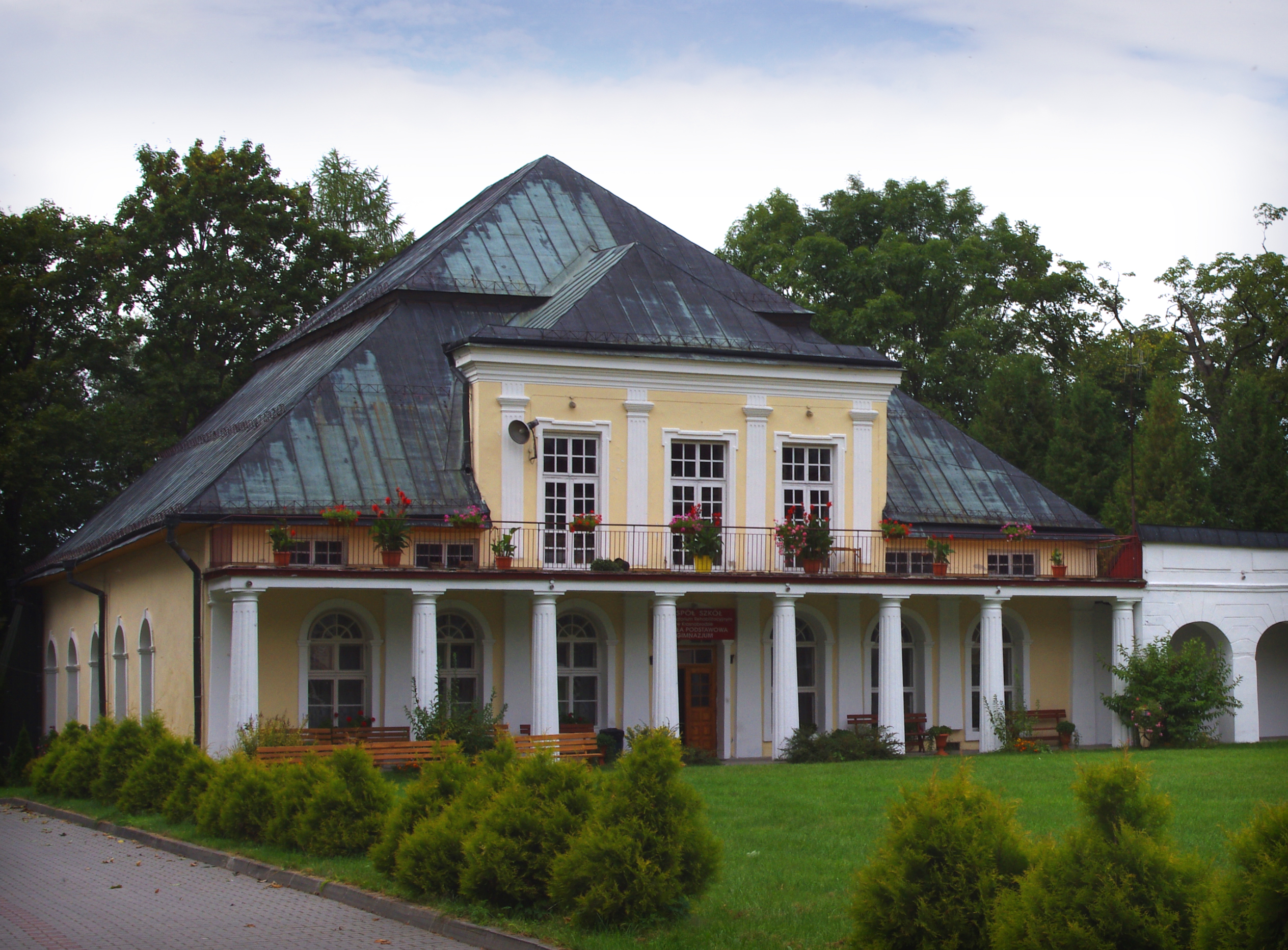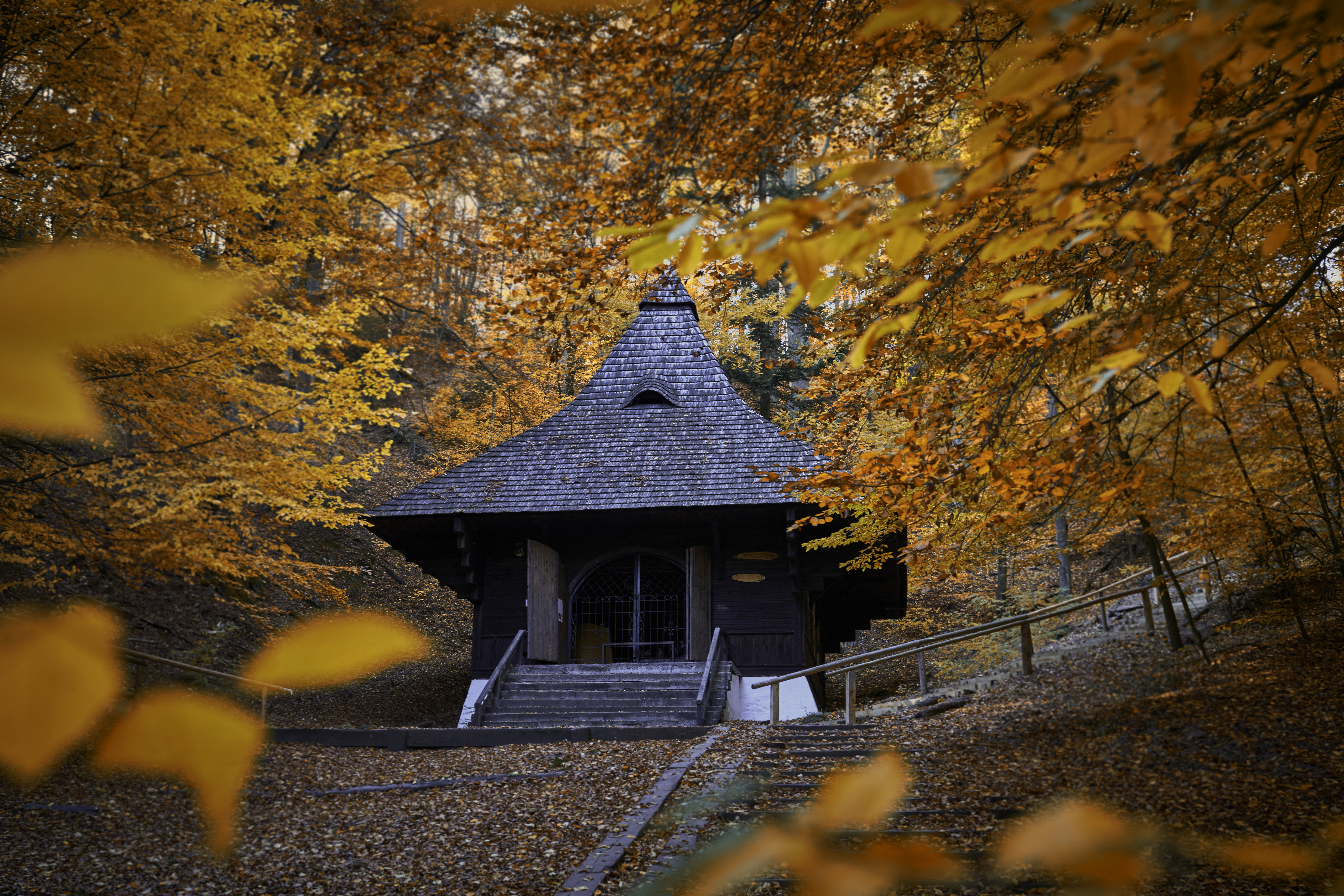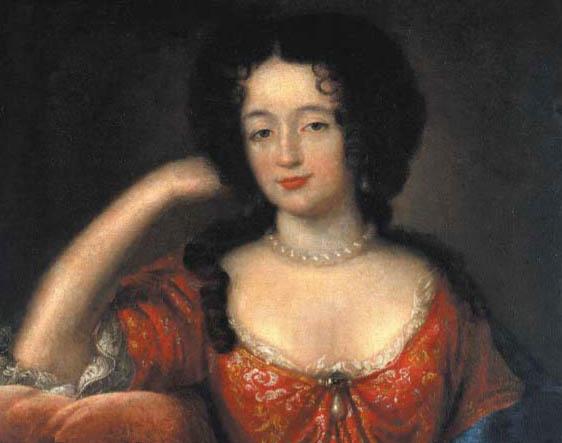Krasnobród on:
[Wikipedia]
[Google]
[Amazon]
Krasnobród (; uk, Краснобруд, Krasnobrud) is a small town in
 The town suffered during the
The town suffered during the
 In 1942, during
In 1942, during
 Krasnobród has been a tourist destination for hundreds of years beginning with the health-related visit of Marie Casimire Louise de La Grange d'Arquien, the wife of
Krasnobród has been a tourist destination for hundreds of years beginning with the health-related visit of Marie Casimire Louise de La Grange d'Arquien, the wife of
Lublin Voivodeship
The Lublin Voivodeship, also known as the Lublin Province ( Polish: ''województwo lubelskie'' ), is a voivodeship (province) of Poland, located in southeastern part of the country. It was created on January 1, 1999, out of the former Lublin, C ...
, Poland. It is located near the Roztocze National Park and Krasnobród Landscape Park. The Wieprz River
The Wieprz (, ; ua, Вепр, Vepr) is a river in central-eastern Poland, a tributary of the Vistula. It is the country's ninth longest river, with a total length of 349 km and a catchment area of 10,497 km2, all within Poland. Its cour ...
flows through the town. Points of interest include an old church and a former Dominican monastery in Krasnobród-Podklasztor and a landscape park with an old manor in Krasnobród-Podzamek (sanatorium for children now).
History
The name of the town comes from theOld Polish
The Old Polish language ( pl, język staropolski, staropolszczyzna) was a period in the history of the Polish language between the 10th and the 16th centuries. It was followed by the Middle Polish language.
The sources for the study of the Old ...
''krasny bród'', which in English means "beautiful ford". According to records, in the mid-16th century the village of Krasnobród was owned by the noble Lipski family. In either 1572 or 1576, it received town charter. At that time, Krasnobród was located near the boundary between Chełm Land of the Crown of the Kingdom of Poland (part of its Ruthenian Voivodeship
The Ruthenian Voivodeship (Latin: ''Palatinatus russiae'', Polish: ''Województwo ruskie'', Ukrainian: ''Руське воєводство'', romanized: ''Ruske voievodstvo''), also called Rus’ voivodeship, was a voivodeship of the Crown ...
), and the Bełz Voivodeship. Across centuries, it remained a private town, owned by several prominent families such as the Leszczyński's, the Zamoyski's, the Tarnowski's and the Jackowski's. Its last owners were the Fudakowski family. Due to location away from main thoroughfare
A thoroughfare is a primary passage or way as a transit route through regularly trafficked areas, whether by road on dry land or, by
extension, via watercraft or aircraft. On land, a thoroughfare may refer to anything from a multi- lane hig ...
s, Krasnobród remained a small town and never turned into an important economic hub.
Until World War II, the population of Krasnobród was ethnically mixed, with dominant Polish and Jewish communities, and small Ukrainian minority. The Roman Catholic parish was established probably in mid-16th century. In 1595, local church was turned into a Calvinist prayer house, remaining so until 1647. On November 23, 1664, Voivode
Voivode (, also spelled ''voievod'', ''voevod'', ''voivoda'', ''vojvoda'' or ''wojewoda'') is a title denoting a military leader or warlord in Central, Southeastern and Eastern Europe since the Early Middle Ages. It primarily referred to the ...
of Sandomierz
Sandomierz (pronounced: ; la, Sandomiria) is a historic town in south-eastern Poland with 23,863 inhabitants (as of 2017), situated on the Vistula River in the Sandomierz Basin. It has been part of Świętokrzyskie Voivodeship (Holy Cross Provi ...
Jan Zamoyski
Jan Sariusz Zamoyski ( la, Ioannes Zamoyski de Zamoscie; 19 March 1542 – 3 June 1605) was a Polish nobleman, magnate, and the 1st '' ordynat'' of Zamość. He served as the Royal Secretary from 1565, Deputy Chancellor from 1576, Grand Chan ...
signed a bill, upon which a Dominican Monastery was established locally.
The age of partitions
 The town suffered during the
The town suffered during the Khmelnytsky Uprising
The Khmelnytsky Uprising,; in Ukraine known as Khmelʹnychchyna or uk, повстання Богдана Хмельницького; lt, Chmelnickio sukilimas; Belarusian: Паўстанне Багдана Хмяльніцкага; russian: в ...
, and in frequent raids of the Crimean Tatars
, flag = Flag of the Crimean Tatar people.svg
, flag_caption = Flag of Crimean Tatars
, image = Love, Peace, Traditions.jpg
, caption = Crimean Tatars in traditional clothing in front of the Khan's Palace ...
. In one such raid, Krasnobród was completely burned, together with the church (see the Battle of Krasnobród (1672)
The Battle of Krasnobród took place on 5–6 October 1672, during the Polish-Ottoman War. It was part of Jan Sobieski’s autumn expedition, aimed at the destruction of mounted Tatar units, which plundered southeastern provinces of the P ...
). As a result, it ceased to be a town for almost a hundred years until 1763, when the town charter was regranted to Krasnobród due to population growth. Following the Partitions of Poland, Krasnobród was seized by the Habsburg Empire
The Habsburg monarchy (german: Habsburgermonarchie, ), also known as the Danubian monarchy (german: Donaumonarchie, ), or Habsburg Empire (german: Habsburgerreich, ), was the collection of empires, kingdoms, duchies, counties and other polities ...
, but after the Congress of Vienna
The Congress of Vienna (, ) of 1814–1815 was a series of international diplomatic meetings to discuss and agree upon a possible new layout of the European political and constitutional order after the downfall of the French Emperor Napoleon B ...
, it became part of the Zamość
Zamość (; yi, זאמאשטש, Zamoshtsh; la, Zamoscia) is a historical city in southeastern Poland. It is situated in the southern part of Lublin Voivodeship, about from Lublin, from Warsaw. In 2021, the population of Zamość was 62,021.
...
District of the Russian-controlled Congress Poland
Congress Poland, Congress Kingdom of Poland, or Russian Poland, formally known as the Kingdom of Poland, was a polity created in 1815 by the Congress of Vienna as a semi-autonomous Polish state, a successor to Napoleon's Duchy of Warsaw. It ...
. During the January Uprising
The January Uprising ( pl, powstanie styczniowe; lt, 1863 metų sukilimas; ua, Січневе повстання; russian: Польское восстание; ) was an insurrection principally in Russia's Kingdom of Poland that was aimed at ...
against the Tsarist domination on March 24, 1863, the Battle of Krasnobród took place here. Soon afterwards, Krasnobród lost its town charter again, this time as a punishment for the support of the rebellion.
In late 19th century, thanks to the efforts of Dr. Alfred Rose, Krasnobród became one of the first European spas for the tuberculosis patients. The idea however, was not successful due to poor communication links with European capitals. During World War I, in June 1915 a battle between imperial Russians and Austrians took place in the town. After the rebirth of the Second Polish Republic
The Second Polish Republic, at the time officially known as the Republic of Poland, was a country in Central and Eastern Europe that existed between 1918 and 1939. The state was established on 6 November 1918, before the end of the First World ...
Krasnobród again joined the sovereign Poland.
World War II
Following the joint Nazi German and Sovietinvasion of Poland
The invasion of Poland (1 September – 6 October 1939) was a joint attack on the Republic of Poland by Nazi Germany and the Soviet Union which marked the beginning of World War II. The German invasion began on 1 September 1939, one week af ...
in World War II, on 17–26 September 1939 Krasnobród was the location of intense fighting between Polish Army Kraków, the Army Lublin Lublin Army ( pl, Armia Lublin) was an improvised Polish Army created on September 4, 1939 from the Warsaw Armoured Motorized Brigade and various smaller units concentrated around the cities of Lublin, Sandomierz and upper Vistula river. It was c ...
, and the German Wehrmacht in the Battle of Tomaszów Lubelski. Polish cavalry of the 25th Greater Poland Uhlan Regiment 25th Greater Poland Uhlan Regiment ( Polish: 25 Pułk Ułanów Wielkopolskich, 25 puł) was a Polish cavalry unit of the Polish Army in the Second Polish Republic. Formed in 1920, it fought both in the Polish–Soviet War and the 1939 Invasion o ...
defeated the German mounted brigade and temporarily re-captured Krasnobród in the Battle of Krasnobród which took place on September 23, 1939. The town soon became part of the General Government ruled by Nazi Germany.
 In 1942, during
In 1942, during the Holocaust in occupied Poland
The Holocaust in Poland was part of the European-wide Holocaust organized by Nazi Germany and took place in German-occupied Poland. During the genocide, three million Polish Jews were murdered, half of all Jews murdered during the Holoca ...
the town was the target of a pacification operation involving the massacre of some 200 Polish Jews
The history of the Jews in Poland dates back at least 1,000 years. For centuries, Poland was home to the largest and most significant Ashkenazi Jewish community in the world. Poland was a principal center of Jewish culture, because of the lon ...
amidst wanton destruction of wealth. Nevertheless, the area remained a center of the activities of the Home Army
The Home Army ( pl, Armia Krajowa, abbreviated AK; ) was the dominant Polish resistance movement in World War II, resistance movement in Occupation of Poland (1939–1945), German-occupied Poland during World War II. The Home Army was formed i ...
. On July 5, 1943, German units ordered all residents to abandon their houses, and Krasnobród was left empty. On June 22, 1944, the village was captured by the Red Army
The Workers' and Peasants' Red Army (Russian language, Russian: Рабо́че-крестья́нская Кра́сная армия),) often shortened to the Red Army, was the army and air force of the Russian Soviet Federative Socialist R ...
. Due to wartime destruction, Krasnobród lost its unique historic architecture featuring heritage wooden houses.
Tourism
 Krasnobród has been a tourist destination for hundreds of years beginning with the health-related visit of Marie Casimire Louise de La Grange d'Arquien, the wife of
Krasnobród has been a tourist destination for hundreds of years beginning with the health-related visit of Marie Casimire Louise de La Grange d'Arquien, the wife of John III Sobieski
John III Sobieski ( pl, Jan III Sobieski; lt, Jonas III Sobieskis; la, Ioannes III Sobiscius; 17 August 1629 – 17 June 1696) was King of Poland and Grand Duke of Lithuania from 1674 until his death in 1696.
Born into Polish nobility, Sobie ...
(1629–1696), who went there to take advantage of the springs believed to have miraculous healing properties. The recreational offers include the man-made lake within the Krasnobród Landscape Park and kayaking tours on the Wieprz
The Wieprz (, ; ua, Вепр, Vepr) is a river in central-eastern Poland, a tributary of the Vistula. It is the country's ninth longest river, with a total length of 349 km and a catchment area of 10,497 km2, all within Poland. Its cour ...
river, as well as numerous nature and hiking trails.
See also
* First Battle of Krasnobród during the Polish–Ottoman War (1672–76) * Second Battle of Krasnobród during theJanuary Uprising
The January Uprising ( pl, powstanie styczniowe; lt, 1863 metų sukilimas; ua, Січневе повстання; russian: Польское восстание; ) was an insurrection principally in Russia's Kingdom of Poland that was aimed at ...
* Third Battle of Krasnobród on 23 September 1939, during the invasion of Poland
The invasion of Poland (1 September – 6 October 1939) was a joint attack on the Republic of Poland by Nazi Germany and the Soviet Union which marked the beginning of World War II. The German invasion began on 1 September 1939, one week af ...
by Nazi Germany
Notes
{{DEFAULTSORT:Krasnobrod Cities and towns in Lublin Voivodeship Zamość County Lublin Governorate Kholm Governorate Lublin Voivodeship (1919–1939) Holocaust locations in Poland Nazi war crimes in Poland